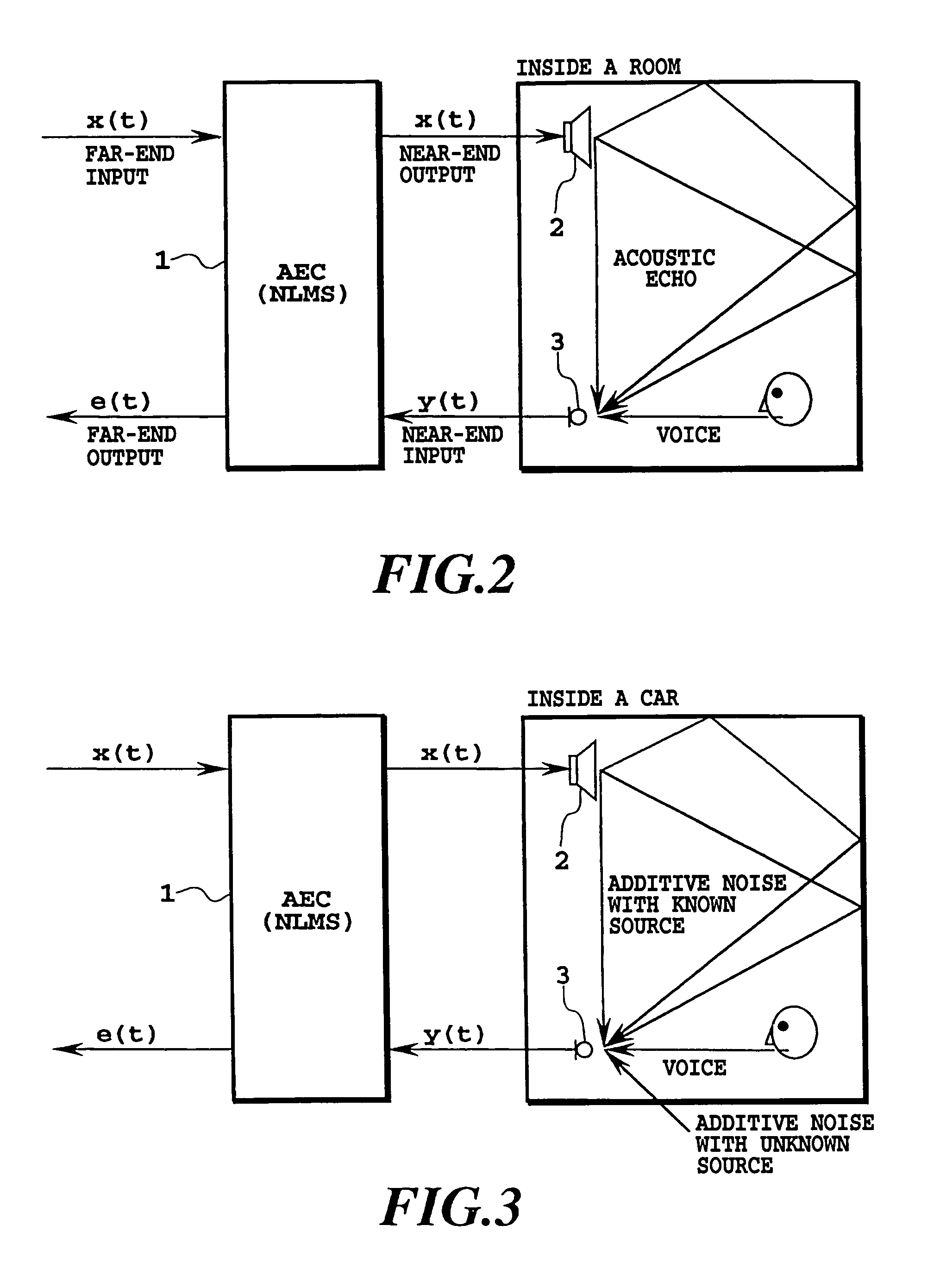Speech processing method and apparatus for improving speech quality and speech recognition performance
- Summary
- Abstract
- Description
- Claims
- Application Information
AI Technical Summary
Benefits of technology
Problems solved by technology
Method used
Image
Examples
first embodiment
[0122]A circuit configuration of the speech processing apparatus according to the first embodiment is shown in FIG. 14. Individual means described below may use known circuits, such as digital circuits and other circuits that can be realized by calculation processing of computer and digital processor. So, a person skilled in the art should be able to manufacture the speech processing apparatus according to FIG. 13. First, the processing performed on each sample will be explained. A source signal 11 is output from the speaker as a speaker output signal 13. A supply means aa7 holds a current impulse response (coefficient of the FIR filter) and supplies the current impulse response 16 to a generation means aa4.
[0123]The source signal 11 is sent to the generation means aa4 where it is transformed into a pseudo acoustic echo signal 15 by the FIR filter. In an elimination means aa5, the pseudo acoustic echo signal 15 is subtracted from a microphone input signal 12 to generate an acoustic ...
second embodiment
[0129]FIG. 15 shows the basic configuration of the second embodiment. A speech processing apparatus 100 having the configuration of FIG. 14 explained in the first embodiment uses the source signal 11 and the microphone input signal 12 to cancel acoustic echoes contained in the microphone input signal 12 to generate an acoustic echo-canceled signal 14. Then, a spectrum calculation means bb1 calculates a spectrum 21 of the acoustic echo-canceled signal 14 by performing the Fourier transform every predetermined number of frame period.
[0130]The spectrum 21 is sent to a cepstrum calculation means bb4 where it is converted into a cepstrum 24 for each predetermined number of frames. A check means bb5 performs a check by using the cepstrum 24 for each predetermined number of frames and outputs a recognition result 25. The check process may use a technique based on either the known hidden Morkov model, the known dynamic programming method or the known neural network method.
third embodiment
[0131]FIG. 16 shows the basic configuration of the third embodiment. Components identical with those of the second embodiment in FIG. 15 are assigned like reference numbers. A speech processing apparatus 100 having the configuration of FIG. 14 uses the source signal 11 and the microphone input signal 12 to cancel acoustic echoes contained in the microphone input signal 12 to generate an acoustic echo-canceled signal 14. Then, a spectrum calculation means bb1 calculates a spectrum 21 of the acoustic echo-canceled signal 14 by performing the Fourier transform every predetermined number of frame period. The spectrum 21 is sent to a spectrum mean calculation means bb2 which, according to equation (8), determines a spectrum mean 22 for each predetermined number of frames.
[0132]The spectrum 21 calculated by the spectrum calculation means bb1 is sent to a spectrum mean subtraction means bb3 where the spectrum mean 22 is subtracted from the spectrum 21 according to equation (9) to obtain a ...
PUM
 Login to View More
Login to View More Abstract
Description
Claims
Application Information
 Login to View More
Login to View More - R&D
- Intellectual Property
- Life Sciences
- Materials
- Tech Scout
- Unparalleled Data Quality
- Higher Quality Content
- 60% Fewer Hallucinations
Browse by: Latest US Patents, China's latest patents, Technical Efficacy Thesaurus, Application Domain, Technology Topic, Popular Technical Reports.
© 2025 PatSnap. All rights reserved.Legal|Privacy policy|Modern Slavery Act Transparency Statement|Sitemap|About US| Contact US: help@patsnap.com



